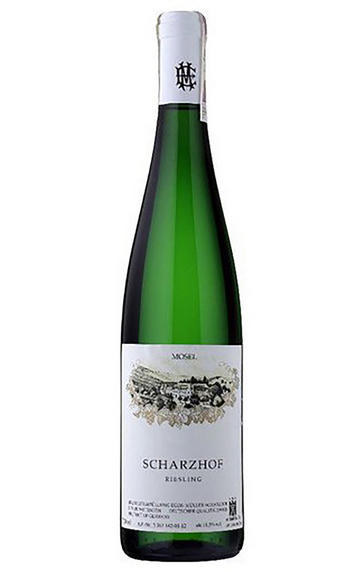
2016 Riesling, Scharzhof, Egon Müller, Mosel, Germany
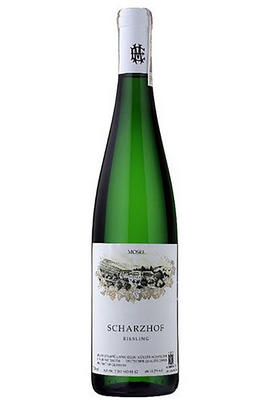
Critics reviews
Drink 2017-2026
David Schildknecht, Vinous (Mar 2018)
About this WINE
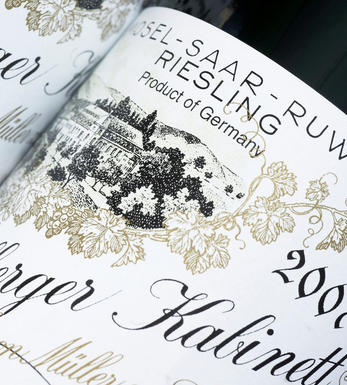
Egon Müller
The Rieslings from Egon Müller are widely recognised as amongst the very best in Germany today. He has just under eight hectares of vines in the world-famous Scharzhofberg vineyard, which includes three hectares of ungrafted Riesling vines from the 19th century.
The grapes are hand-harvested and then pressed without any skin contact before being fermented in large, 1,000-litre oak casks in the natural, deep cellars. The wines are usually bottled six months later. Müller’s sweet Rieslings are arguably the finest in Mosel, while his Kabinett and Spätlese wines are fine and elegant.
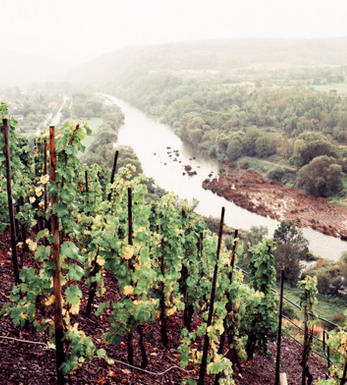
Germany
The 102,000 hectares of German vineyards produce some of the world’s greatest white wines from the Riesling grape. With a run of excellent vintages, top estate wines are at long last fashionable, with Riesling finally getting the acknowledgment it deserves. Its touch of sweetness is underpinned by a racy acidity and a fresh purity from the fruit.
Germany is the tenth largest wine-producer in the world. Its vineyards are centred around the major rivers – ie the Rhine and the Mosel – as well as their tributaries. The continental climate with its hot summers, cold winters and long, warm autumns is perfect for late-harvest wines. The finest examples are produced on steep, often terraced, south-facing vineyards close to the rivers. The maintenance and the harvesting of the vines are often done by hand.
White grapes make up 64 percent of plantings, with the proportion of red grapes increasing. Riesling has a knack of maintaining its varietal character while reflecting the terroir of its site, so while all German Rieslings have that balance of nerve-tingling pure fruit and refreshing acidity, there are definite regional differences.
The steep, slaty slopes of the Mosel Valley produce the lightest, most mineral Rieslings, with firm, steely examples coming from its tributaries, the Saar and Ruwer. The south-facing slopes of the Rheingau are drier and sunnier, so the wines there are fuller. The underrated Nahe lies in between the Mosel and Rheingau both stylistically and geographically, while the large Rheinhessen region can produce firm, full and racy Rieslings. The Pfalz further south is warmer, hence its wines are richer.
Traditional wines have a degree of sweetness but there has been a move towards dry and medium-dry styles (ie trocken and halbtrocken), which made up just over 65 percent of production in 2012.
In an effort to help consumers distinguish dry wines from sweet, the Association of German Prädikat Estates or Verband der Prädikatsweingüter (VDP in German), an organization of almost 200 wineries, decided to introduce a classification system. The objective was to restore the prestige of significant vineyards across Germany: Erste Lage (First Site) and Grosse Lage (Grand/Great Site) refer to the best of the best German wines, made with terroir, regionality and traditional taste criteria in mind. Wines at this level must adhere to a number of regulations, ensuring the quality of bottles bearing the name of an Erste or Grosse Lage.
If the Lage is made in a dry style, it will be classed as either Erstes Gewächs (Premier Growth) or Grosses Gewächs (Grand/Great Growth). Erstes and Grosses Gewächs are premium and super-premium dry wines produced according to strict high standards, handcrafted by Germany’s finest wine-growers. The term promises us fully-fermented, dry wines from the top vineyard sites across Germany. The wines of this exclusive category are from the finest parcels sites and are subject to even stricter production criteria. Grosses Gewächs are some of the greatest dry white wines in the world; powerful, concentrated and saturated with mineral complexity.
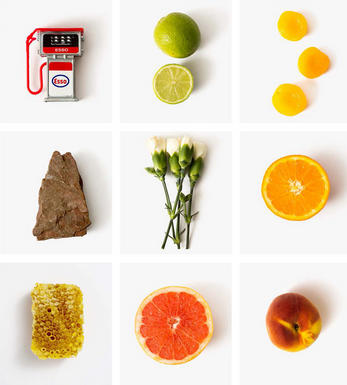
Riesling
Riesling's twin peaks are its intense perfume and its piercing crisp acidity which it manages to retain even at high ripeness levels.
In Germany, Riesling constitutes around 20% of total plantings, yet it is responsible for all its greatest wines. It is planted widely on well-drained, south-facing slate-rich slopes, with the greatest wines coming from the best slopes in the best villages. It produces delicate, racy, nervy and stylish wines that cover a wide spectrum of flavours from steely and bone dry with beautifully scented fruits of apples,apricots, and sometimes peaches, through to the exotically sweet flavours of the great sweet wines.
It is also an important variety in Alsace where it produces slightly earthier, weightier and fuller wines than in Germany. The dry Rieslings can be austere and steely with hints of honey while the Vendages Tardives and Sélection de Grains Nobles are some of the greatest sweet wines in the world.
It is thanks to the New World that Riesling is enjoying a marked renaissance. In Australia the grape has developed a formidable reputation, delivering lime-sherbet fireworks amid the continental climate of Clare Valley an hour's drive north of Adelaide, while Barossa's Eden Valley is cooler still, producing restrained stony lime examples from the elevated granitic landscape; Tasmania is fast becoming their third Riesling mine, combining cool temperatures with high UV levels to deliver stunning prototypes.
New Zealand shares a similar climate, with Riesling and Pinot Gris neck to neck in their bid to be the next big thing after Sauvignon Blanc; perfectly suited is the South Island's Central Otago, with its granitic soils and continental climate, and the pebbly Brightwater area near Nelson. While Australia's Rieslings tend to be full-bodied & dry, the Kiwis are more inclined to be lighter bodied, more ethereal and sometimes off-dry; Alsace plays Mosel if you like.


Buying options
Add to wishlist
Description
Penetrating aromas and bright juiciness of apple and lemon are reinforced in their invigorating effect by the pungency and bite of raw ginger as well as a nettle-like prickle. An impression of wet stone also runs from the nose through the polished, delicate but concentrated midpalate. A luscious infusion of fresh apricot and a saliva-liberating lacing of mineral salts add appeal to an animating finish and render the next sip irresistible. I can’t recall having tasted a more impressive Scharzhof bottling, a fact that might well be directly related to the major crop losses suffered this year in Saarburg (and to a lesser extent Wiltingen), whence this cuvée is sourced. But as Veronika Lintner points out, some of this wine’s delightful sense of levity can be laid at the door of lower must weights, offering yet another example of how, inexplicably, crop loss this year to peronospora seldom resulted in prematurely elevated Oechsle. I wouldn’t hesitate to cellar some of this.
Drink 2017-2026
David Schildknecht, Vinous (Mar 2018)
wine at a glance
Delivery and quality guarantee